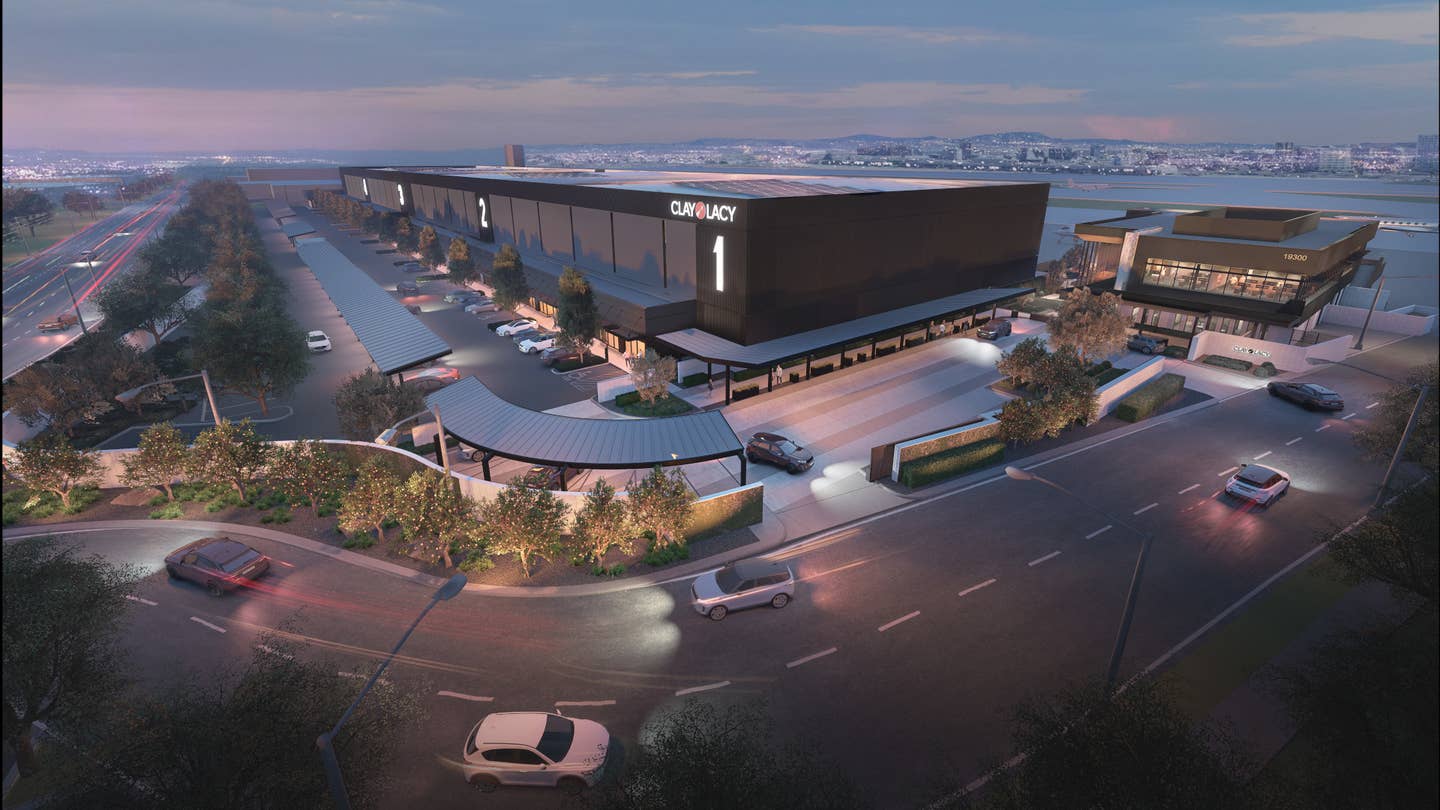Clay Lacy Aviation, Overair Partner to Bring Air Taxis to Southern California
The FBO network and infrastructure developer will install vertiports and electric chargers and work toward an air taxi concept of operations.

A digital rendering of Clay Lacy Aviation’s planned upgrade to its FBO terminal at John Wayne Airport (KSNA) in Orange County, California. [Courtesy: Overair]
California is home to tens of thousands of butterflies, but none of them get their energy from electricity…at least, not yet.
Soon, a very different kind of Butterfly—the electric vertical takeoff and landing (eVTOL) air taxi from manufacturer Overair—may grace the Golden State’s skies following a partnership between Overair and Clay Lacy Aviation. The FBO network and infrastructure developer is working with the manufacturer to introduce advanced air mobility (AAM) services across Southern California.
The core focus of the strategic collaboration will be on vertiports and a concept of operations for Butterfly and other AAM aircraft. Clay Lacy Aviation will spearhead the development of electric charging infrastructure and operational logistics.
“Ultra-quiet, all-electric aircraft bring the promise of convenient and efficient transportation, easing traffic congestion and reducing travel times,” said Scott Cutshall, senior vice president of strategy and sustainability at Clay Lacy Aviation.
Overair, meanwhile, will bring expertise in aircraft integration, certification, and maintenance, as well as flight path planning and user and vertiport software. The manufacturer will also work to get the public on board for AAM services.
“AAM is an ideal addition to Southern California’s transportation network, creating a new option for fast, safe, and quiet transportation in the region,” said Valerie Manning, chief commercial officer of Overair. “We have been working with our partners at Clay Lacy [Aviation] for over a year and are delighted to announce our shared plan. We are confident that this strategic collaboration will leverage our respective strengths.”
Standing up vertiports will be a key component of the partnership, providing Clay Lacy Aviation hubs out of which to fly Butterfly. The vertiports figure to feature heavily in Overair’s concept of operations for AAM services in the region, which will dictate exactly how Butterfly and other air taxis fly.
Overair completed its first full-scale Butterfly prototype in December, joining a handful of manufacturers to have actually built an eVTOL design. The aircraft—designed to fly a pilot and up to five passengers on 100 sm (87 nm) zero-emission trips, cruising at 174 knots—is expected to begin flight testing this year.
“As we continue to make strides developing Butterfly, we’re also focused on partnering with infrastructure leaders to ensure that operations using this new mode of transit can be scaled quickly and efficiently,” said John Criezis, head of mobility operations at Overair.
Overair and Clay Lacy Aviation intend to install electric charging infrastructure across Southern California, starting with the latter’s FBO locations at John Wayne Airport (KSNA) in Orange County and Van Nuys Airport (KVNY) in Los Angeles.
According to the partners, their intent is to cover the broad needs of all AAM operators rather than a single standard. Overair, for example, is one of many eVTOL manufacturers that signed onto the General Aviation Manufacturers Association’s (GAMA) endorsement of the combined charging system (CCS) standard for electric aviation.
CCS is designed to support all electric vehicles, ground or air. It’s the most widely used global standard for electric ground vehicles but is steadily losing out to Tesla’s North American charging system (NACS) alternative. For air taxis, Joby Aviation is pushing its global electric aviation charging system (GEACS) as the industry standard.
A pair of CCS supporters—Archer Aviation and Beta Technologies—have publicly clashed with Joby over which system should be adopted universally. Clay Lacy Aviation, however, intends to build infrastructure that fits both proposals.
“Clay Lacy Aviation is committed to installing the electrical infrastructure to support all makes and models of electric aircraft, both fixed wing and eVTOL, to encourage the adoption of electric flight,” Cutshall told FLYING. “In planning our new FBO development at John Wayne Airport, we are speaking with multiple OEMs and our local utility provider to ensure that the electric infrastructure we build out can support both CCS and GEACS charging protocols.”
Joby this week agreed to install GEACS chargers in the New York City region, following a partnership with Atlantic Aviation to electrify FBO terminals in New York and Los Angeles. Both Archer and Beta also signed partnerships with Atlantic to add CCS systems at other company locations. Joby will also install a GEACS charger at Clay Lacy Aviation’s John Wayne FBO.
It’s possible that one system will entirely supplant the other as OEMs and operators pick a side—a scenario that appears to be unfolding in the U.S. electric ground vehicle industry. But whether CCS or GEACS wins out, Clay Lacy Aviation intends to be able to serve both.
Overair’s agreement with Clay Lacy Aviation comes on the heels of similar arrangements with Dallas/Fort Worth International Airport (KDFW) and the city of Arlington, Texas, to launch AAM services in the North Texas region. The manufacturer plans to deliver aircraft to customers in India and South Korea, working with local partners to develop infrastructure and operational plans.
Like this story? We think you'll also like the Future of FLYING newsletter sent every Thursday afternoon. Sign up now.

Subscribe to Our Newsletter
Get the latest FLYING stories delivered directly to your inbox






